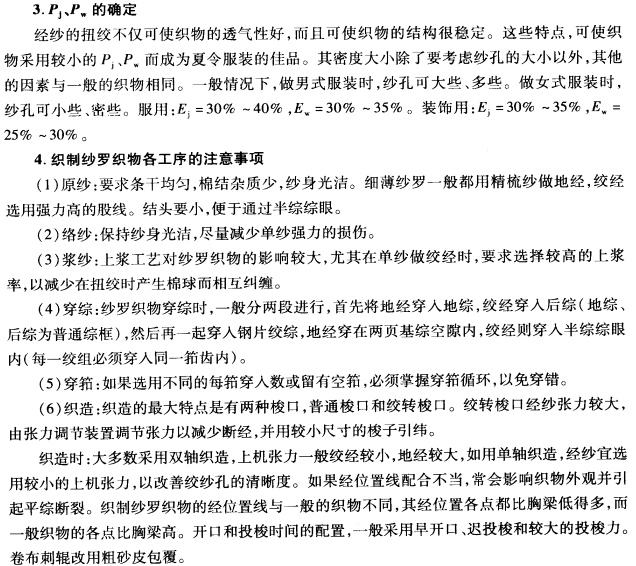1. Raw materials: pure cotton, polyester/cotton and various chemical fibers (such as acrylic). 2. Yarn requirements: In order to make the yarn holes clear and the fabric thin and refreshing, the warp and weft yarns need to be even, with less cotton impurities and less hairiness. Generally, fine combed yarns are used and the twist is high. When twisting the warp yarn, it has to withstand greater tension, so strands are often used. Since there are only one or a few weft yarns in the “yarn holes” of leno fabrics, they are easily broken when worn, so the weft yarns of leno fabrics should also have high strength. (1) Pure cotton leno fabric: Ground warp 13-21tex (28~45 English), twisted warp 13tex×2-21tex×2 (28 English×2~45 English×2), or both ground and twisted warps Use the same number of yarns or threads. (2) Polyester/cotton leno fabric: The warp and weft yarn density is 20%-30% lower than that of pure cotton yarn to maintain good breathability of the fabric. (3) Medium-thick leno fabric for decoration: Use 16.9tex×4 (35 English×4) acrylic yarn or wool-type viscose yarn, synthetic filament, etc. with corresponding special numbers. The fabric is rich and soft, with a wool-like style. Or imitation silk style. 

AAAretytuoiuo3453345klj,hfg
Leno fabric design composite fabric information
1. Raw materials: pure cotton, polyester/cotton and various chemical fibers (such as acrylic). 2. Yarn requirements: In order to make the yarn holes clear and the fabric thin and refreshing, the warp and weft y…
This article is from the Internet, does not represent Composite Fabric,bonded Fabric,Lamination Fabric position, reproduced please specify the source.https://www.yjtextile.com/archives/35748






